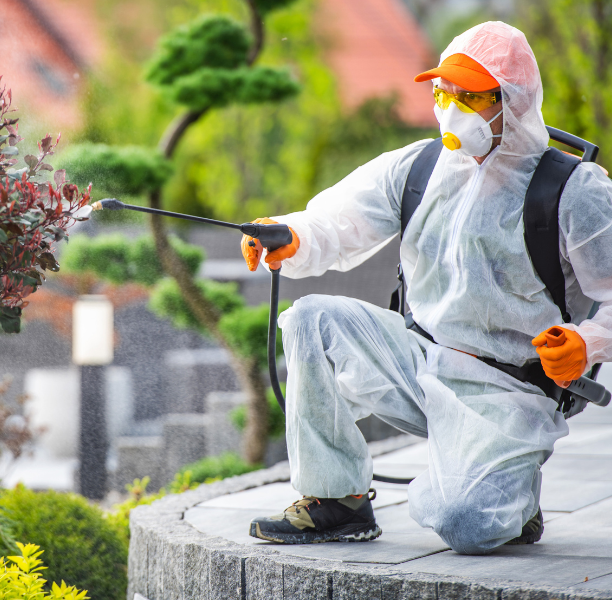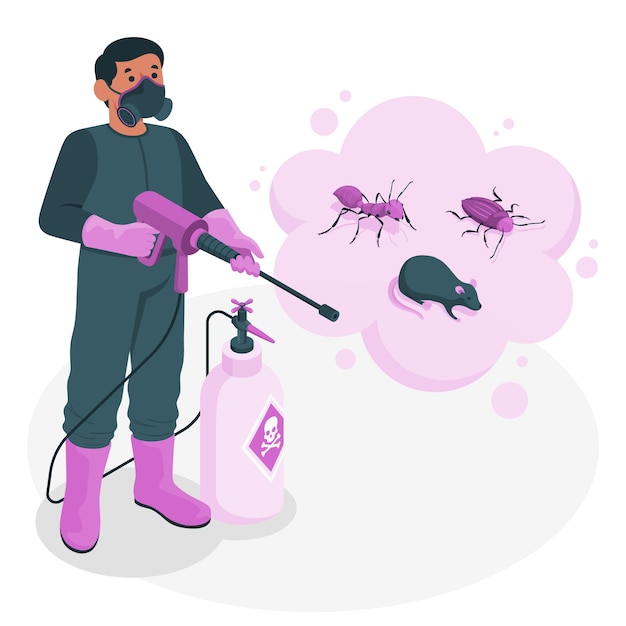Safe and Dependable Insect Control for Lasting Protection
Reliable bug administration requires a complex method that stabilizes environmental integrity with the demand for efficient pest reductions. The nuances of these approaches may not be instantly clear, motivating a better exam of the methods that can lead to lasting insect control outcomes.
Recognizing Pest Control Approaches
Insect control incorporates a variety of techniques focused on handling and eradicating undesirable insects and rodents that can threaten both health and wellness and building. Understanding these techniques is crucial for efficient parasite administration.
The key categories of insect control approaches consist of mechanical, biological, and chemical techniques. Mechanical methods include physical obstacles and catches to avoid bug entry and capture undesirable varieties. Using screens on windows or employing sticky catches can substantially minimize pest populaces without presenting dangerous substances - exterminator coquitlam.
Chemical parasite control is frequently one of the most recognized technique, using chemicals to eliminate pests. These chemicals can be reliable however should be used with care to stay clear of negative impacts on non-target varieties and the setting.
Benefits of Eco-Friendly Solutions
How can green services transform parasite control practices? The adoption of green parasite control techniques provides various benefits, significantly improving the performance and safety of insect administration.

One more advantage is the favorable effect on local biodiversity. Environment-friendly services are developed to target particular insects while preserving advantageous insects and wild animals, advertising a balanced ecological community. This approach straightens with the growing customer demand for lasting techniques, improving the track record of pest control companies.
Integrated Pest Monitoring Techniques
The implementation of green remedies normally results in the fostering of Integrated Pest Monitoring (IPM) methods, which even more enhance bug control effectiveness. IPM is an all natural strategy that combines numerous strategies to handle pest populations while decreasing environmental influence. This technique emphasizes making use of biological, social, mechanical, and chemical controls, making sure a balanced and lasting technique of parasite management.
One basic element of IPM is the thorough evaluation of parasite activity and ecological conditions. By keeping track of parasite populations and recognizing their life cycles, professionals can apply targeted interventions that disrupt the parasite's habitat or lifecycle, lowering reliance on chemical pesticides. Furthermore, social practices such as plant rotation and habitat adjustment can significantly lessen pest establishment and reproduction.
One more vital part is the use of biological control agents, such as beneficial insects or microbes, which can naturally reduce parasite populaces. When chemical applications are needed, IPM focuses on using low-risk pesticides and applies them precisely, lessening direct exposure to non-target organisms and humans.
Incorporating IPM strategies not only improves pest control effectiveness but also promotes a safer environment, straightening with the growing demand for sustainable practices in pest management.
Safe Practices for Homeowners
Recognizing the significance of more info here safe practices in parasite control can equip property owners to efficiently manage pest issues while protecting their wellness and the atmosphere. Implementing safe techniques and precautionary measures is critical in decreasing exposure to hazardous chemicals.
Property owners need to first examine their environment for conditions that attract bugs, such as standing water, clutter, and food waste. Consistently cleaning and sealing entrance factors can discourage bugs from attacking the home. Utilizing all-natural deterrents, such as vital oils or diatomaceous planet, can offer reliable alternatives to chemical pesticides.
When chemical therapies are necessary, house owners need to choose products that are especially classified as risk-free for domestic use. It is important to comply with application guidelines carefully to prevent overexposure. Utilizing targeted therapies in areas where bugs are determined, instead than blanket spraying, can considerably decrease chemical use.
Finally, preserving open communication with insect control experts is essential. Homeowners ought to ask regarding the security of items made use of and demand environment-friendly alternatives whenever feasible. By taking on these secure techniques, home owners can create a healthier living environment while efficiently handling insect problems.

Tips for Long-Term Security
Establishing a bug administration strategy that highlights lasting security can considerably enhance the performance of the safe practices previously reviewed. To attain this, property owners should implement normal assessments of their building, concentrating on hidden areas such as attics, cellars, and crawl areas. Early discovery of bug activity is essential in preventing infestations from holding.
In addition, preserving a tidy atmosphere is important. This consists of appropriate food storage, without delay cleaning up spills, and routinely throwing find out away trash. These practices minimize attractants that draw parasites into the home. Additionally, securing entrance points, such as splits around windows and doors, can properly obstruct potential parasite gain access to.
Landscaping must additionally be thought about; maintaining plants cut and maintaining a range in between vegetation and the home minimizes hiding spots for bugs. Making use of all-natural deterrents, such as vital oils or diatomaceous planet, can even more discourage infestations without turning to rough chemicals.
Finally, teaming up with a professional bug control service for regular examinations can supply an added layer of security. These professionals can supply tailored recommendations and progressed therapies, making certain that your home remains safeguarded against insects in the long term.
Verdict
In conclusion, trusted and secure parasite control calls for a complex strategy that highlights green approaches and incorporated parasite monitoring. By carrying out natural deterrents, performing routine assessments, bed bug infestation and preserving proper sanitation, building proprietors can substantially reduce pest populaces while securing advantageous pests and the setting. Partnership with specialist bug control solutions improves the effectiveness of these approaches, making certain tailored solutions that give enduring security and peace of mind versus future invasions.
Effective parasite administration requires a complex method that balances eco-friendly stability with the need for reliable insect reductions. The adoption of green insect control approaches provides many benefits, dramatically improving the effectiveness and safety and security of bug management.The application of eco-friendly solutions normally leads to the fostering of Integrated Insect Monitoring (IPM) strategies, which further improve parasite control efficacy. exterminator coquitlam. By checking bug populaces and identifying their life cycles, practitioners can execute targeted treatments that disrupt the insect's habitat or lifecycle, reducing reliance on chemical pesticides.In final thought, secure and dependable parasite control calls for a complex technique that stresses environmentally friendly techniques and incorporated bug monitoring